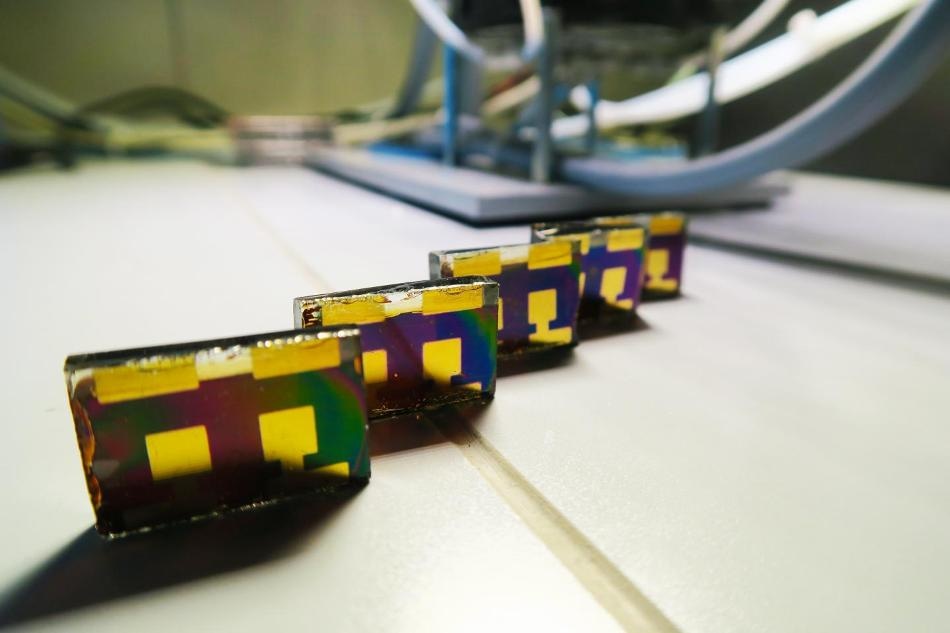Jun 21 2019
Metal-halide perovskites were found to be photovoltaic materials only a decade back. At present, the fabricated perovskite solar cells are nearly as efficient as the best traditional silicon solar cells.
 Perovskite solar cells in the lab. (Image credit: Wolfgang Tress (EPFL))
Perovskite solar cells in the lab. (Image credit: Wolfgang Tress (EPFL))
It is hoped that perovskite solar cells will become a cheap and extremely efficient substitute, since they can be fabricated by rather easy and quick techniques such as printing.
The stability of perovskite devices is the main hindrance for commercialization. Operational stability is generally evaluated by constant illumination in the laboratory or by outdoor testing. The disadvantage of the former approach is that it does not account for the real-world operation changes in temperature and irradiance due to season and day-night changes. These are particularly important for perovskite solar cells owing to their slow response times.
By contrast, for outdoor experiments, it is required that the devices are enclosed in such a way that they are not exposed to severe weather conditions. However, encapsulation mainly focuses on parasitic failure mechanisms that are not essentially related to the perovskite material itself.
To fix this problem, Wolfgang Tress, a researcher in the laboratory of Anders Hagfeldt at EPFL, in collaboration with the coworkers at the laboratory of Michael Grätzel, brought the practical conditions into the controlled environment of the laboratory. The researchers used data from a weather station near Lausanne (Switzerland) to reproduce the actual irradiance and temperature profiles from particular days during the course of the year. The researchers, using this approach, successfully quantified the energy yield of the devices under feasible conditions.
“This is what ultimately counts for the real-world application of solar cells,” stated Tress.
The research discovered that there is no marked influence of irradiance and temperature variations on the performance of perovskite solar cells. There is a slight reduction in the efficiency of the cells during day time, but it increases during the night.
The study provides a further step towards the assessment of the performance and reliability of perovskite solar cells under realistic operation conditions.
Wolfgang Tress, Scientist¸ Laboratory of Photomolecular Science, EPFL